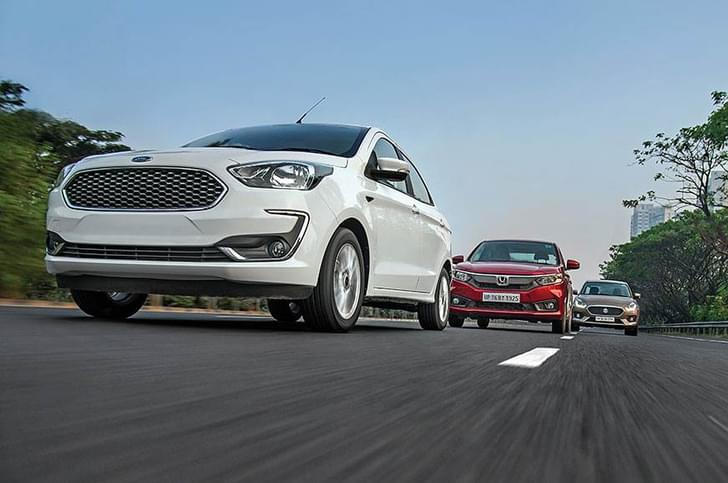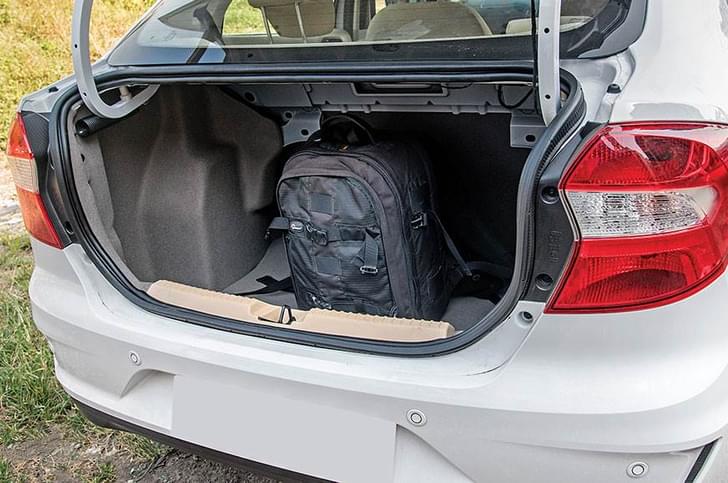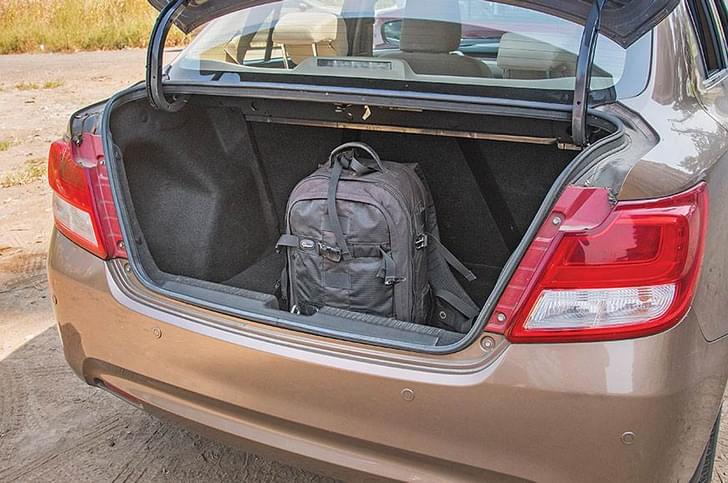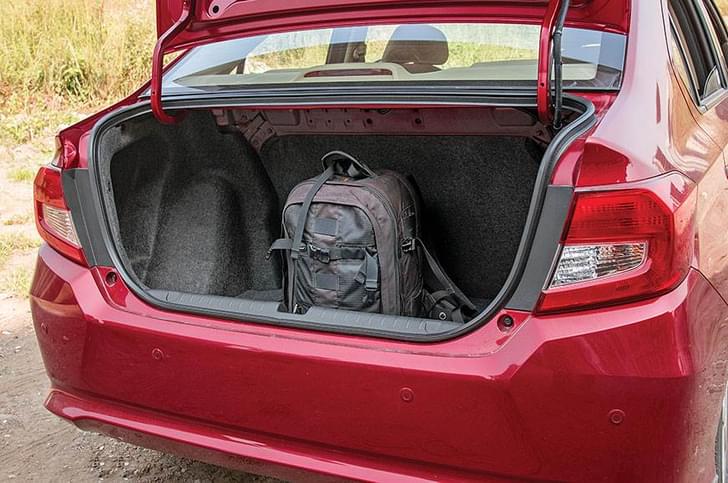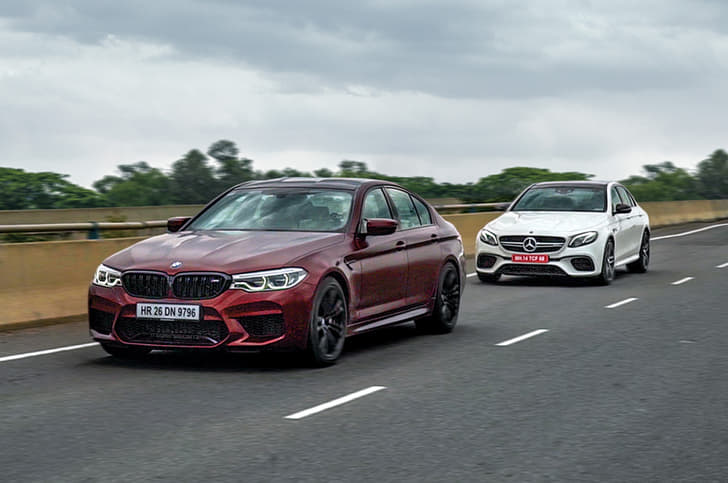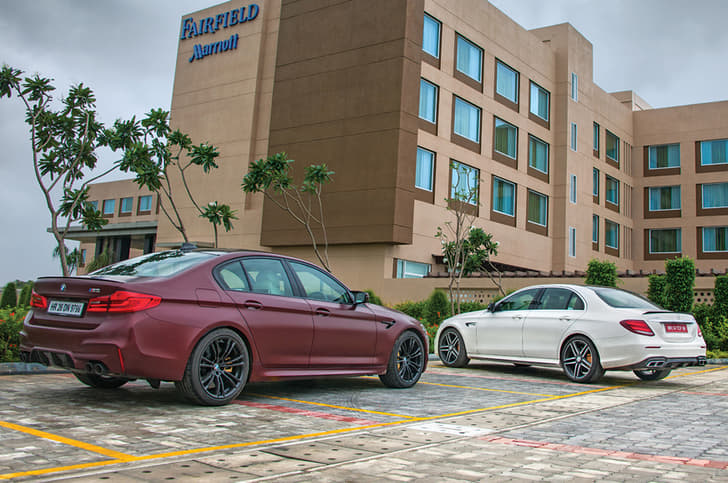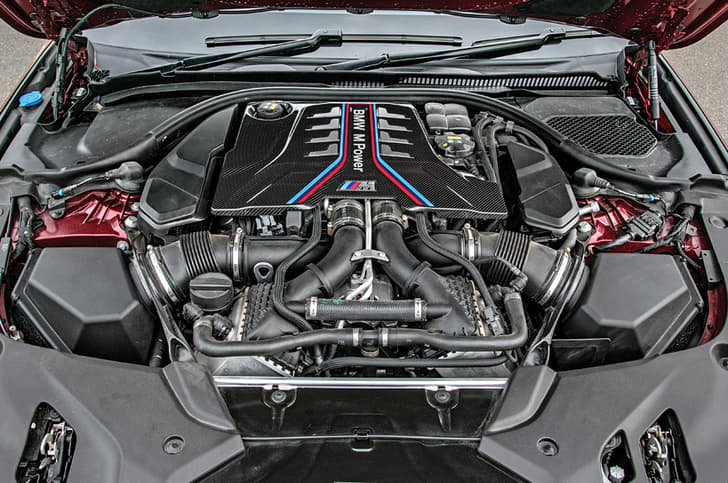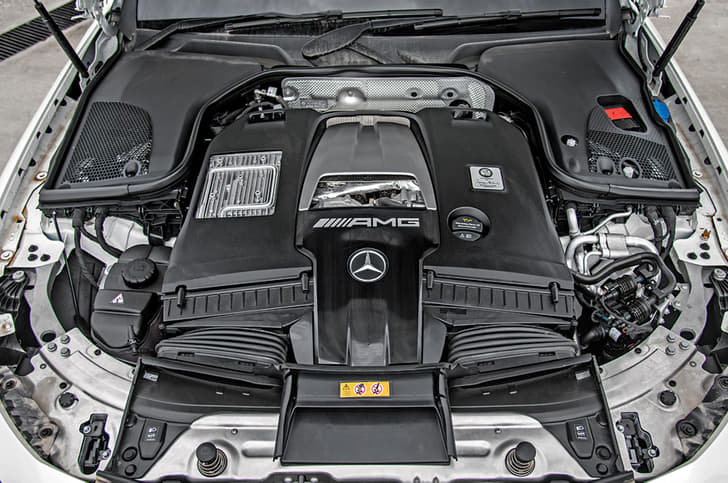Which was the last Nissan you were excited about? If I discount the GT-R, my answer is the Terrano. And that model was launched all the way back in 2013. The new Kicks, however, changes things. It’s fresh, it’s funky and it’s got people talking. But what really piqued our curiosity was that on first acquaintance last month, it also came across as rather accomplished in the way it drives. We just had to know how the new Nissan fares against its closest rivals.
The Kicks’ closest rival comes in the form of the Renault Captur. After all, the two models are built on Renault’s M0 platform, use the same mechanicals and are even put together at the same production facility. The Kicks and Captur do differ in look but it’ll be interesting to see how much they differ in execution. Then there’s the Hyundai Creta whose immense popularity makes it the SUV to beat. The Creta has been facelifted, upgraded and tweaked since the last time it went into competition and is all the better for it.
We’ve brought together the diesel-manual versions of the three models to find out which one is best.
Style file
As far as first impressions go, the Nissan Kicks makes a very strong one. It’s the longest of the three models and also looks larger in the metal than it appears in advertisements, with the generous 210mm of ground clearance lending it a strong stance. The design is distinctive too and deftly mixes crossover and SUV proportions that will draw a second glance. Elements like the snout-like nose, contrast roof and gently raked tail work really well. Also, the well-defined lines and edgy detailing are new-age Nissan and make the Kicks look very international.
The Renault Captur has a very European look to it too, but the decidedly crossover design hasn’t caught the fancy of Indian buyers. In fact, the Captur’s biggest weakness in India is that it simply doesn’t look ‘SUV enough’. Still, it has loads of road presence. It’s a big car, and the chunky squat stance and Kicks-equalling 210mm of ground clearance sure help the look.
With its relatively boxy shape and upright stance, it’s the Creta that conforms closest to the traditional SUV template. It’s a neat looker too; the 2018 facelift brought with it a larger grille among other updates, adding some more personality to the design. While the Creta is the tallest, it is the shortest in length and sits the lowest (ground clearance stands at 190mm), and doesn’t quite have the visual mass of its rivals.
| Specifications | |||
|---|---|---|---|
| Nissan Kicks 1.5 dCi XV Premium+ | Renault Captur Diesel Platine | Hyundai Creta 1.6 CRDi SX(O) | |
| L/W/H | 4384/1813/1651mm | 4329/1813/1619mm | 4270/1780/1665mm |
| Wheelbase | 2673mm | 2673mm | 2590mm |
| Ground Clearance | 210mm | 210mm | 190mm |
| Engine | 4cyl, 1461cc, turbo-diesel | 4cyl, 1461cc, turbo-diesel | 4cyls, 1582cc, turbo-diesel |
| Power | 110hp at 3850rpm | 110hp at 3850rpm | 128hp at 4000rpm |
| Torque | 240Nm at 1750rpm | 240Nm at 1750rpm | 260Nm at 1500-3000rpm |
| Gearbox | 6-speed manual | 6-speed manual | 6-speed manual |
Inside line
Open the Kicks’ doors and what you’ll see is a very un-Nissan-like cabin. It’s not dull and drab as we’ve come to expect of cars from the Japanese carmaker but is actually premium and inviting. The quilted leather seats make a great first impression and the design and layout of the dashboard, with its free-standing 8.0-inch touchscreen, is also in keeping with the times. The swathe of leather across the dash also adds greatly to the look and feel of things, and even things like the part-digital instruments are nicely executed. However, it’s not all hunky-dory on the inside. Many of the plastics look low rent and then there are ergonomic issues too – the front seats are set a bit too high, the footwell is narrow (and lacks a dead pedal) and the fixed centre armrest will foul with your arm when you use the handbrake.
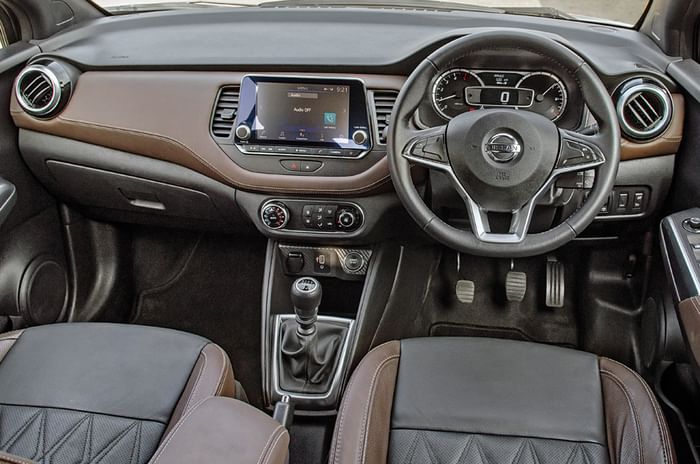
The Captur’s cabin has the same shortcomings as its Japanese cousin, with the added issue of inadequate in-cabin storage. A tiny glovebox is common to both models but the Captur lacks sufficient cubbys for bottles and the like. The Captur’s front seats seem even higher set than the Kicks’, meaning taller occupants will be looking down at the road rather than straight at it. And frankly, the cabin’s hard and scratchy plastics are not in keeping with the SUV’s price. That’s not to say the Captur’s cabin doesn’t have its interesting elements. The front seats are plush, the dashboard is smart in layout and the butterfly-look instrument console with its digital speedometer is unique too.
Everything’s a lot more conventional on the inside of the Creta, which in reality is no bad thing. Sure, the dashboard doesn’t stand out for design any more, but everything is within easy reach, there’s no shortage of storage space and the overall feeling is one of being in a well-thought-out cabin. It’s well finished too with the most consistent plastic quality. Front seat comfort and visibility are also good, and as an added advantage, the Creta with its upright A-pillars, also gives drivers that all-important feeling of piloting an SUV – something you don’t quite get in the Kicks or Captur.
On the contrary, you don’t get an SUV-like view out from the Creta’s rear seats. And it’s the low-set rear seats and rising window line that are to blame for that. However, the Creta easily offers the most room for passengers here and the nicely angled rear-seat backrests are also the comfiest. Expectedly, the rear seat experience on the Kicks and Captur is very similar. Legroom is not bad by any stretch but the rear backrest feels a touch upright on both models. Of the other things to bring up, the Kicks’ rear seat is on the firmer side, while the Captur’s oversized front seats reduce the sense of space in the back.

The three SUVs are very close on boot capacity but, again, it’s the Creta that’s the best shaped and most useable. Also note, while the Creta positions its spare tyre under the boot floor, the Kicks and Captur’s spares sit under the body.
Feature presentation
While we’ve featured the Creta in SX(O) trim, Hyundai has recently added a new range-topping SX(O) Executive version too that gets segment-first ventilated front seats. The Renault and Nissan with us are in their respective top-spec trims. The Kicks is the first-in-segment with a 360-degree parking camera, while the Creta is the only one to get an auto-dimming mirror, a powered driver’s seat, a sunroof and wireless phone charging. However, the Creta misses out on LED headlights, auto lights and auto wipers that are part of the equipment on the Kicks and Captur.
In the battle of the infotainment systems, it’s a close fight between the Kick’s 8.0-inch touchscreen and the Creta’s 7.0-inch unit. The Kicks’ system is slick to operate and has sharper, higher resolution graphics but catches reflections. The Creta’s unit is not as high-res and though it’s easy to navigate, the overall system feels dated compared to the Kicks’. Captur buyers will be disappointed to learn the 7.0-inch touchscreen doesn’t come bundled with Apple CarPlay or Android Auto.
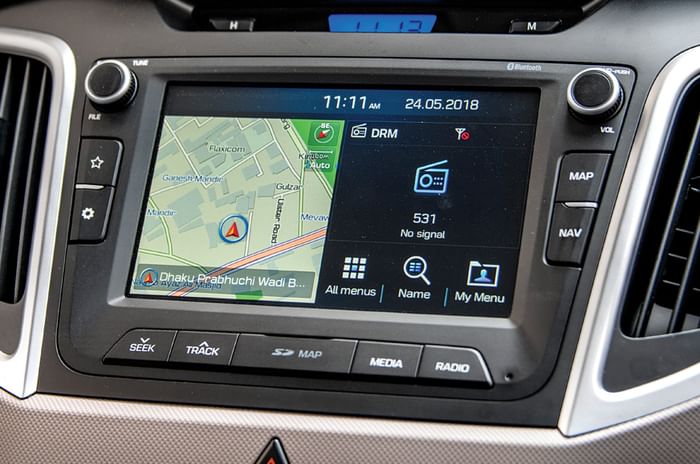
In terms of safety kit, all three SUVs come with ABS, ESC and hill-start assist. The top-spec Creta goes one up on its rivals with its six airbags, while the Kicks and Captur feature four each.
Power trip
If you are familiar with your Nissans and Renaults, you’d have guessed which engine powers the Kicks and Captur. It’s none other than the long-standing K9K 1.5-litre diesel unit in its 110hp and 240Nm state of tune. There are, however, ever so subtle differences in how this engine and the standard-fit, 6-speed manual gearbox feel on the SUVs.
For instance, where there’s a noticeable surge in power around 2,000rpm in the Captur, the Kicks is a wee bit gentler in how it delivers its turbo’s, well, kick. What also comes handy is that the Kicks feels more comfortable off-boost. Of the two, it’s also the Nissan that has the lighter clutch and the marginally smoother gearshifts. Add it all up and it’s the Kicks that is the slightly easier SUV to live with in town. Look at the performance figures, though, and things equalise. The Kicks is just about faster to 100kph but the two SUVs are near identical through the gears, say at 30-50kph in third, 50-70kph in fourth or 80-100kph in fifth gears. But be it on the Nissan or the Renault, the 1.5 engine feels its best in the 2,000-4,000rpm band, even if it will pull quite readily to 4,800rpm or so.
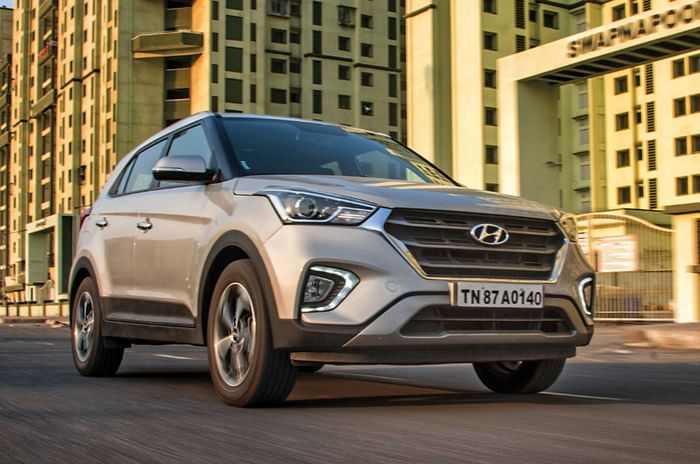
In comparison, the Creta’s 1.6-litre diesel engine has the wider powerband, is freer revving and generally feels the most enthusiastic. The engine’s 128hp power and 260Nm torque figures also make the Hyundai the most powerful of the three SUVs. Interestingly enough, while the Creta is the quickest to 100kph from a standstill, it’s also slowest through gears three, four and five. The engine does take some time to get into its stride but the transition to the powerband is very smooth, it actually makes the Creta the friendliest to drive. What makes the experience in town nicer still is the slick gearbox and the relatively light clutch.
| Performance | |||
|---|---|---|---|
| Nissan Kicks 1.5 dCi XV Premium+ | Renault Captur Diesel Platine | Hyundai Creta 1.6 CRDi SX(O) | |
| 0-20kph | 1.73 sec | 1.97 sec | 1.14 sec |
| 0-40kph | 3.54 sec | 3.83 sec | 2.50 sec |
| 0-60kph | 5.65sec | 5.90 sec | 4.40 sec |
| 0-80kph | 8.78 sec | 9.01 sec | 7.24 sec |
| 0-100kph | 12.87 sec | 13.10 sec | 10.81 sec |
| 0-120kph | 18.11 sec | 18.93 sec | 15.33 sec |
| 0-140kph | 27.14 sec | 27.74 sec | 22.88 sec |
| 20-80kph (in third gear) | 10.48 sec | 10.46 sec | 11.52 sec |
| 40-100kph (in fourth gear) | 11.41 sec | 11.82 sec | 12.42 sec |
The ride stuff
Renault’s M0 platform is renowned for being hardy and its strengths permeate into the Kicks’ and Captur’s driving experiences. Both SUVs feel tough and almost seem engineered to take a beating. This character bodes well in India, with both feeling unfazed by our broken roads. You really can thunder across vast tracts of sub-standard surfaces in the Nissan and Renault with the confidence that nothing will break or work itself loose. Simply put, the Kicks and Captur feel rugged in a way that the Creta simply doesn’t.
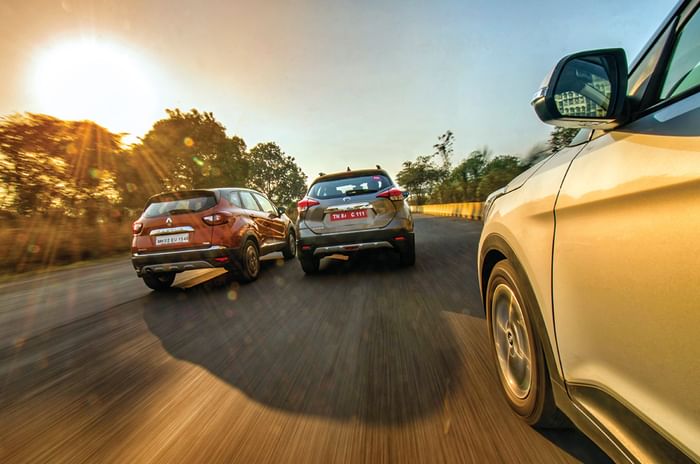
While the Kicks and Creta feel largely the same in how they tackle bumps, a back-to-back drive does reveal the minutest of differences. It’s the Kicks’ suspension that rounds off the bumps better at low speeds, while the Captur does feel marginally more settled at high speeds. But the differences are so small they shouldn’t impact your overall buying decision. Both SUVs smoothen out potholes with ease and feel confident at high speeds. Unfortunately, steering kickback on bumps is an issue on the duo and the old-school hydraulic assist for the steering also calls for more effort in town.
The Creta, with its lighter steering, is easier to park and manoeuvre in town. The Hyundai’s suspension also delivers a very pliant ride at low speeds. Up the pace, though, and the Creta moves about in a way the Kicks and Captur don’t, and you just don’t get the same reassuring heft at the steering either. On really bad sections of road, you’ll also be able to tell the Creta’s body isn’t particularly ‘tight’. Frankly, the Hyundai is at its happiest in urban confines.
Alive and kicking
Tally up the points and give the right weightage to the areas that matter to the typical mid-sized SUV buyer and you’ll get the answer to which is the best SUV of the trio.
The Renault Captur is a solidly engineered product that feels built for India. What also works in the Renault’s favour is its price tag. Courtesy a substantial price reduction (nearly Rs 80,000), the Captur in top-spec Platine form now costs Rs 13.25 lakh (ex-showroom, Delhi), which makes it great value for money. However, it falls short in the area of cabin quality and also isn’t the most convenient SUV to drive in town. And then there’s the subjective issue of the Captur’s looks.
The Kicks immediately goes one up on the Captur with a more universally likeable design. And, with its better-finished cabin and longer feature set, the Kicks also feels more premium than the Renault. At the same time, the Kicks is every bit as rugged as its cousin, making it a far more wholesome package. The top-spec Kicks XV Premium+ is significantly pricier but you also get a whole lot more goodies for the added outlay. But good as it is, the Kicks isn’t perfect.
For all its style, it has a few rough edges and lacks the overall plushness and refinement of the Creta. And like Renault, Nissan doesn’t have the strongest of dealer networks in India.
If your daily route comprises bombed-out roads or you cover long distances frequently, the Kicks would be the right choice. But let’s face it, most mid-sized SUVs are mainly city-bound with the occasional out of town drives, and that’s where the Creta noses ahead of the Kicks. The Hyundai is the easiest to drive, the nicest on the inside, the roomiest and also the best equipped. In short, the Creta ticks the right boxes for buyers drawn to SUVs for their image and comfort rather than utility. There’s no denying that at Rs 15.1 lakh, the Creta SX(O) is expensive, but with multiple variants on offer there is a Creta for every budget.
| Verdict | |||
|---|---|---|---|
| Nissan Kicks 1.5 dCi XV Premium+ | Renault Captur Diesel Platine | Hyundai Creta 1.6 CRDi SX(O) | |
| Verdict | Fresh, tough and upmarket. It's a Nissan you'd want to buy. | Rugged and great value but cousin Kicks offers more. | Wins for ease-of-use and comfort rather than for traits of an SUV |
| Rating | 8/10 | 7/10 | 8/10 |
| Price (ex-showroom, Delhi) | Rs 14.65 lakh | Rs 13.25 lakh | Rs 15.10 lakh |
It might not be ‘the perfect SUV’ as Hyundai has labelled it, but for the average buyer, the updated Creta is still the best option out there.








